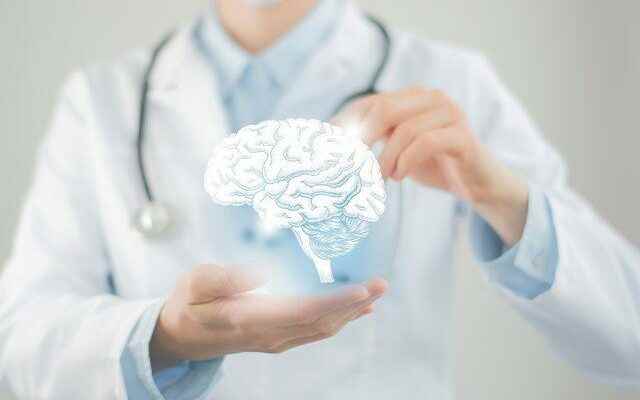‘Deep brain stimulation’, popularly called ‘brain battery’, is a method used in the treatment of some diseases that occur in the neurological system.
8 MOST ASKED QUESTIONS ABOUT ‘BRAIN PACKET’ TREATMENT!
Acıbadem International Hospital Brain and Nerve Surgery Specialist Prof. Dr. Sabri Aydın pointed out that the brain battery, the use of which has become increasingly widespread in our country, has been successfully applied in many diseases, especially Parkinson’s patients, who are resistant to drug treatment or cannot use medication due to the side effects of the drug, and said, Very satisfactory results are obtained in essential tremor (tremor disease) that can progress and dystonia that can progress with involuntary contraction movements. Because the brain battery corrects many of the symptoms, it allows patients to do their daily work without the need for help. Thus, the daily life comfort of the patients increases significantly.
QUESTION: What is the mechanism of action of the brain battery?
REPLY: In brain pacing surgery, thin wires are placed in the ‘brain nuclei’ in the middle part of the brain, and then this system gives a continuous electrical stimulation through a battery placed in the chest or abdomen. Thus, the nerve cells damaged by the disease reorganize and the symptoms caused by the disease disappear.
QUESTION: In which diseases is it effective?
REPLY: With this method, Parkinson’s patients can get rid of problems such as tremor, inability to walk and talk and lead a normal life. The brain battery provides 80 percent improvement in tremor, which is the main symptoms of Parkinson’s disease, 70 percent in inactivity and contraction, and 50 percent in walking. About 60-70% recovery is expected in muscle spasms that develop involuntarily due to the wrong transmission of the signal transmitted by the brain, which is called dystonia with the brain pacing method. prof. Dr. Sabri Aydın says, “The main aim in dystonia is to make the patient independent by ensuring that he meets his own needs, and to reduce the involuntary movements and contractions that disrupt his daily life, and to improve the ergonomics of life.” With this method, a 70 percent reduction in motor tics is expected in Tourette Syndrome. This decrease in verbal tics is around 30 percent. In essential tremor (familial inherited – activating by movement), the postoperative success rate is as high as 80 percent. prof. Dr. Emphasizing that this rate is lower in tremors due to Multiple Sclerosis, Sabri Aydın gives the information that “A success of around 50 percent is expected in treatment-resistant pain syndromes”.

QUESTION: What are the preparations made before the operation?
REPLY: The patient is admitted to the hospital the day before the surgery. In addition to the necessary blood tests and consultations, a special brain MRI is taken.
QUESTION: How is brain pacing surgery performed?
REPLY: The next morning, the first stage of the two-stage surgery begins. Under local anesthesia or general anesthesia in selected patients, the headgear called the stereotactic frame is attached to the patient’s skull bone. Then, the patient’s brain tomography is taken, and the images are superimposed with the MRI taken the previous day. In this way, the target core is mapped and the coordinates are obtained. Then, 2 holes on the right and left are drilled in the anterior-upper part of the patient’s head. Meanwhile, the patient does not feel any pain. The previously determined stereotactic values are entered into the frame and the core is scanned at one-tenth of a millimeter intervals with special sensor electrodes thinner than a hair. prof. Dr. Sabri Aydın states that this process determines the location of the best cell electrical activity and continues: “In other words, the core is mapped with the microelectrode recording system and electricity is supplied to the determined area. Then, with the improvement in the patient’s existing symptoms, side effects are observed. The permanent electrode is inserted and fixed where the response is best. This process is done on both sides. The operation area is closed, the headgear is removed, and the patient is put to sleep under general anesthesia, and the second stage is started. The permanent electrodes inserted in the first surgery are combined with an extension cable behind the ear and connected to a battery placed in a pocket made under the collarbone. It is checked that the system works electrically and the operation is terminated.

QUESTION: When is the patient discharged after the surgery?
REPLY: Since it is not a painful operation, patients can be mobilized within a few hours. They are discharged at the end of the 2nd day after the operation. The battery turns on after a week, while the setting of the battery sits in about a month.
QUESTION: Is it a risky method?
REPLY: Very successful results are obtained in well-chosen patients who are referred by the specialist physician of the disease and who have no problems in their psychometric tests. Risks such as infection and bleeding are quite low compared to other brain surgeries.
QUESTION: What is the lifespan of the brain battery?
REPLY: The brain battery is divided into two groups as charged and non-charged. The rechargeable ones are 5 cm long and 1 cm thick, and the non-rechargeable ones are 7 cm long and 1 cm thick. The life of the non-rechargeable battery varies between 3-5 years, depending on the disease and the voltage used. When the battery needs to be changed after the surgery, it is replaced with a day surgery. Rechargeable batteries have a lifespan of 25 years. Neurosurgery Specialist Prof. Dr. Sabri Aydın stated that the brain battery needs to be charged 2-3 times a week, depending on its usage, and said, “The charging system is easy to use. It is placed in an attached belt and magnetically charged. The patient is not connected to electricity and can do his daily work at the same time.”

QUESTION: What are the advantages of brain pacing surgery?
REPLY: Brain pacing has become a more and more widely used method due to the significant benefits it provides to the patient. prof. Dr. Sabri Aydın lists the advantages of the brain circuit as follows: “The method does not damage the brain and other tissues and does not leave permanent damage. The system can be turned off completely at any time. If necessary, the settings are rearranged with the remote control. Even if the disease progresses, the new symptoms of the disease can be combated by changing the values of the current given through this control. While the life of rechargeable batteries can extend up to 15-20 years, the battery can be easily replaced with a very small incision and local anesthesia if the life of non-charged batteries runs out.
WHICH DISEASES ARE USED?
- Parkinson’s disease,
- Tremor (tremor disease),
- dystonia,
- chronic pain syndromes,
Neuropsychiatric diseases (OCD- obsessive disease, treatment-resistant major depression, Tourette’s syndrome, etc.)
